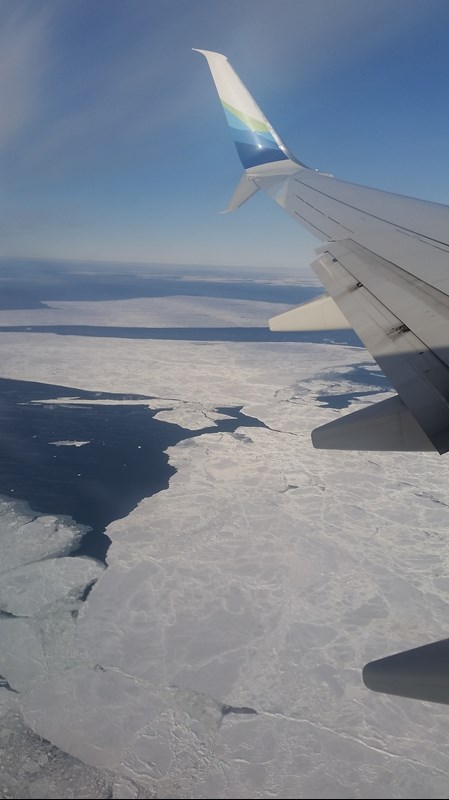- Dec 2
- Children of the Arctic
- Apr 18
- Snow, Wind, and Ice
- Apr 16
- Lesson from the Arctic
- Apr 14
- I Love Doing Science!
- Jan 28
- Bouncing Back in Whiteness
- Jan 27
- The Magical SAR Queen Rules!
- Jan 26
- Arctic Winter Science
- Jan 25
- A Day to Chill
4/12/2018
Back up in Barrow (Utqiagvik) for possibly our last year of end-of-winter snow and ice surveys. Actually wasn’t even supposed to be doing it this year, but seemed like a priority to keep the record alive so tagging along with some new and old collaborators in crime. Wonderful views of the thawing cryosphere from Fairbanks to Anchorage and back north (AA flyaround) today until Brooks Range when landscape was obscured by clouds. At about Drew Point, white clouds cleared to see the white land- / water-scape. Coming up to the Barrow Peninsula it finally broke into patches of dark blue with wide open-ocean towards the Chukchi and more ice on the Beaufort side.

This year’s been another record setter in terms of sea ice rebound from summer melt. And feedback to ambient temperature have been striking in many parts of the Arctic. What’s really interesting is how much snow there seems to be around here. Plow berms along the road to NARL are high enough to make it hard to see normal landmarks and our measurement (only two lakes so far) were way high, over 30 cm, where its normally more like 15 cm. More open water should produce more snowfall in addition to warmer temperatures (see Alexeev for details). Both conspire to slow growth of ice on lakes, but it’s the snow that really puts the hit on it. Again, only two lakes surveyed, but averaged 105 cm, which will probably beat last year’s record low of 120 cm at the end of ice growth season (usually late May or early June). Note teammate Go Iwahana only needed 1-m of flight for most holes drilled today, but digging snow was more labor intensive.
 So why is it nice if more sea ice helps lake ice grow thick? Because most of these lakes are very shallow and in the past froze solid, protecting permafrost below them from thawing. When ice doesn’t go all the way to the bed by winter’s end, that water, cold, but warmer than frozen ground, starts to thaw the ground below. East Twin Lake (second one we visited today) has almost always frozen solid by this time of year. But last year it didn’t and it wasn’t frozen today either with over a foot of water to go. Funny thing is, it is 25 cm deeper this year than last. Now why might that be? Stay tuned or offer your own speculation.
So why is it nice if more sea ice helps lake ice grow thick? Because most of these lakes are very shallow and in the past froze solid, protecting permafrost below them from thawing. When ice doesn’t go all the way to the bed by winter’s end, that water, cold, but warmer than frozen ground, starts to thaw the ground below. East Twin Lake (second one we visited today) has almost always frozen solid by this time of year. But last year it didn’t and it wasn’t frozen today either with over a foot of water to go. Funny thing is, it is 25 cm deeper this year than last. Now why might that be? Stay tuned or offer your own speculation.